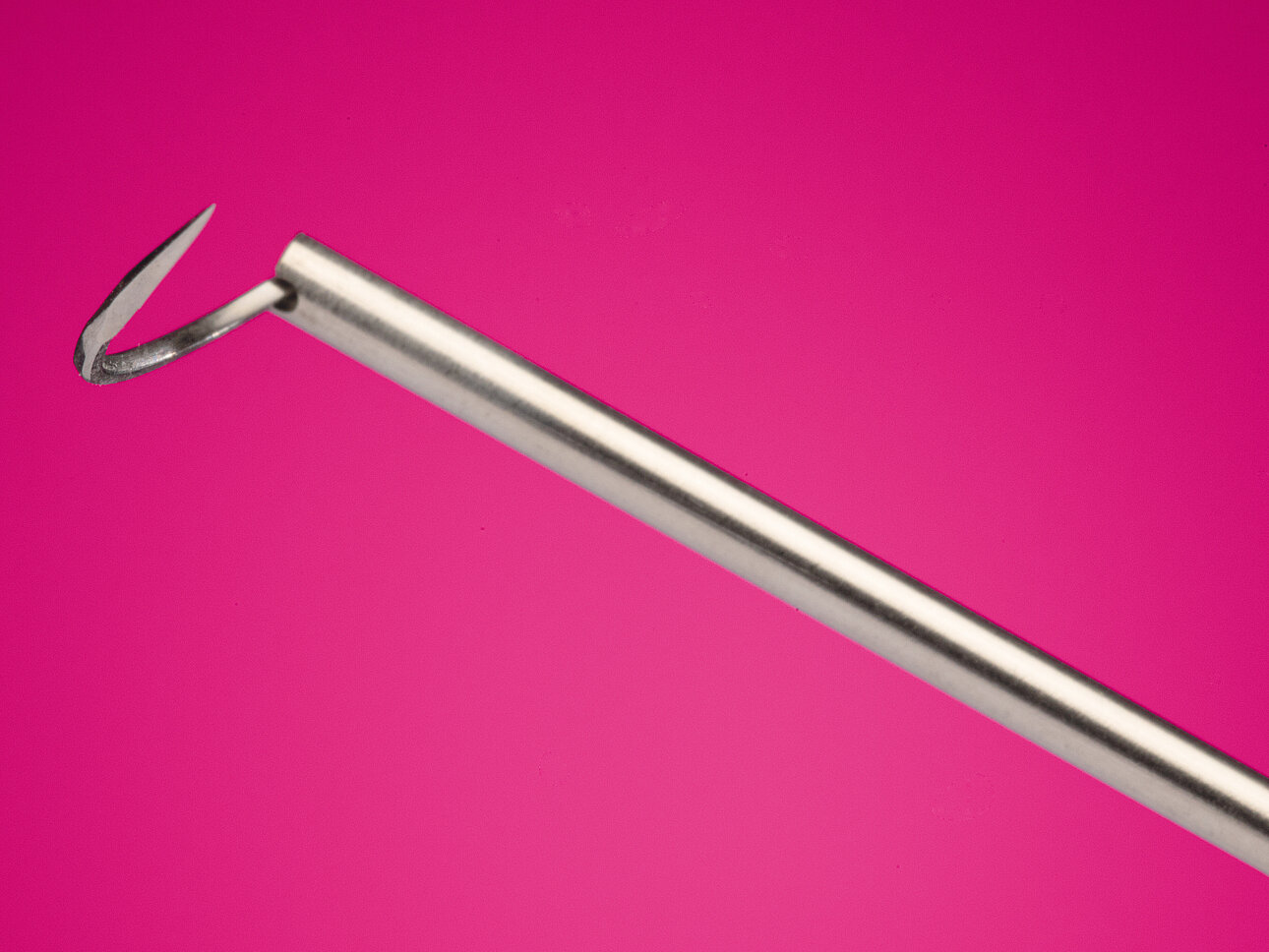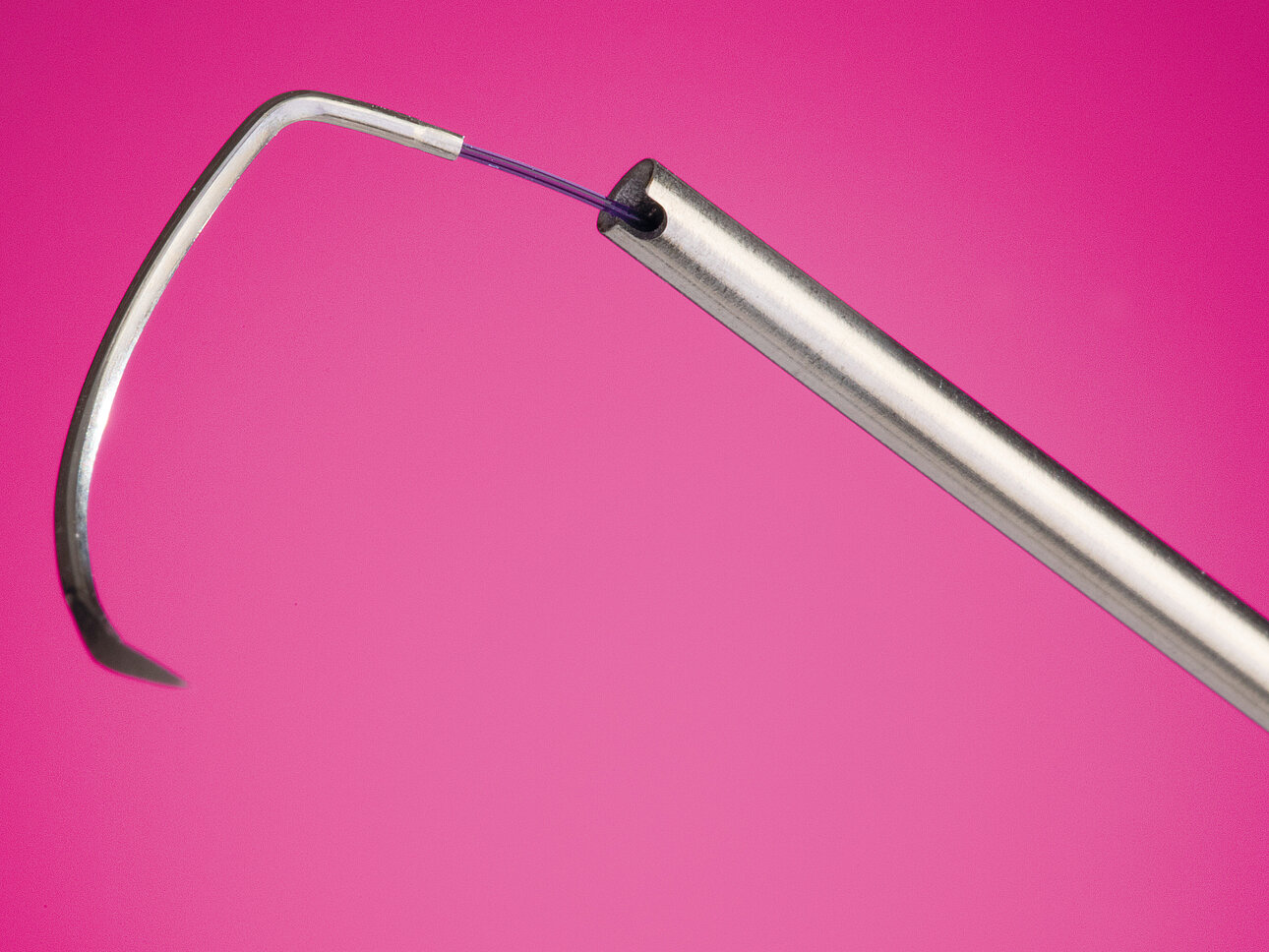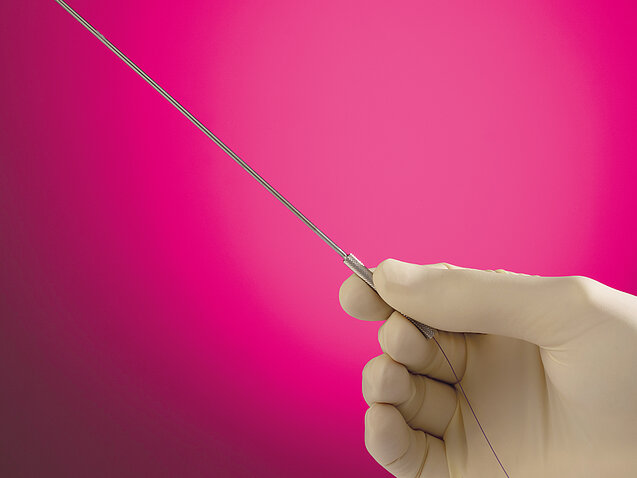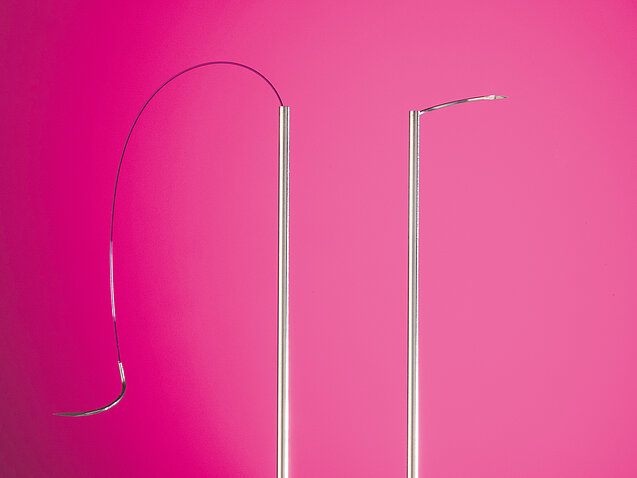Downloads
- ENDO-NAHT MSD NEY Leaflet Version 03/2023 - Art. No.: 851178
- ENDO-NAHT MSD NEY delivery programme Version 03/2023 - Art. No.: 851184
Combined with a needle locking function
Dr Jörg Neymeyer from the Charité University Hospital Berlin developed the ENDO-NAHT MSD NEY (MSD = Minimal Suturing Device) especially to meet the needs of transurethral suturing. This suturing system provides an alternative to the conventional approach in the fields of urology and gynaecology: it is gentle on the patient and quick.
The suturing system consists of a suture guiding tube and a needle-thread combination comprising an absorbable suture and a special double-curved needle.
Guiding tube
- made of surgical steel
- small outer diameter (approx. 2mm) for gentle passage through the urethra
- flexibility and torsion stability
- structured handle ensures that the guiding tube sits comfortably in the hand, even when wearing wet gloves
- special fixation slot into which the specially shaped needle can be locked in place when necessary. Once the needle is locked in place, a suture can be placed by rotating the guiding tube.
The MSD NEY procedure allows wounds to be closed more easily without resorting to open or laparoscopic abdominal surgery.
Innovative and effective procedure
With the modern suturing system ENDO-NAHT MSD NEY, it is now possible to place sutures in the bladder using a minimally invasive technique, thus making bladder surgery easier. This allows, under cystoscopic guidance, the closure of bladder fistulas directly during the primary surgery, the treatment of urachal cysts and patent urachi, the performance of en-bloc tumour resections, and the removal of renal pelvis carcinomas and ureteric tumours. Furthermore, prevesicular ureteral stenoses (recurrences) can also be removed completely.
Until now, larger wounds reqired open surgery to close the wall defects. This has now changed thanks to the ENDO-NAHT MSD NEY. A suture guiding tube with a semi-rigid form can be introduced via the urethra. The special needle is secured in an upright position by pulling on the suture and then locked into place according to the lock-and-key principle. The special needles are available in both curving directions. They can be turned in either direction, thus allowing the placement of a transurethral suture without causing any additional damage to the tissue. The knot (e.g. Roeder knot) is tied using the extracorporeal technique and placed at the closure site with the aid of the special knot slider.
The ENDO-NAHT MSD NEY can also be used as a support for laparoscopic procedures (management of the bladder cuff during a nephroureterectomy procedure).
For patient and surgeon
Surgeons can use the patient’s natural orifices to remove diseased tissue of the genitourinary tract by applying the NOTES technique (NOTES = Natural Orifice Transluminal Endoscopic Surgery). Where major surgery was necessary in the past, it is now possible to use minimally invasive techniques with the ENDO-SUTURE MSD NEY.
Using the ENDO-SUTURE MSD NEY means a reduced risk of infection for the patient in comparison with open surgery. The average operating time is also significantly reduced.





![[Translate to Englisch:] Blase mit Defekt [Translate to Englisch:] Zeichnung einer Blase mit Defekt](/fileadmin/_processed_/5/7/csm_1_blase_und_defekt_f3dd83ecd4.jpg)
![[Translate to Englisch:] Einführung Nahtwerkzeug [Translate to Englisch:] Einführung des Nahtwerkzeugs in die Blase](/fileadmin/_processed_/2/7/csm_2_nahtwerkzeug_f03eb44c63.jpg)
![[Translate to Englisch:] Knotenschlinge [Translate to Englisch:] Verschluss der Wunde mit einer Knotenschlinge](/fileadmin/_processed_/a/a/csm_3_knotenschlinge_version2_a50c08c327.jpg)